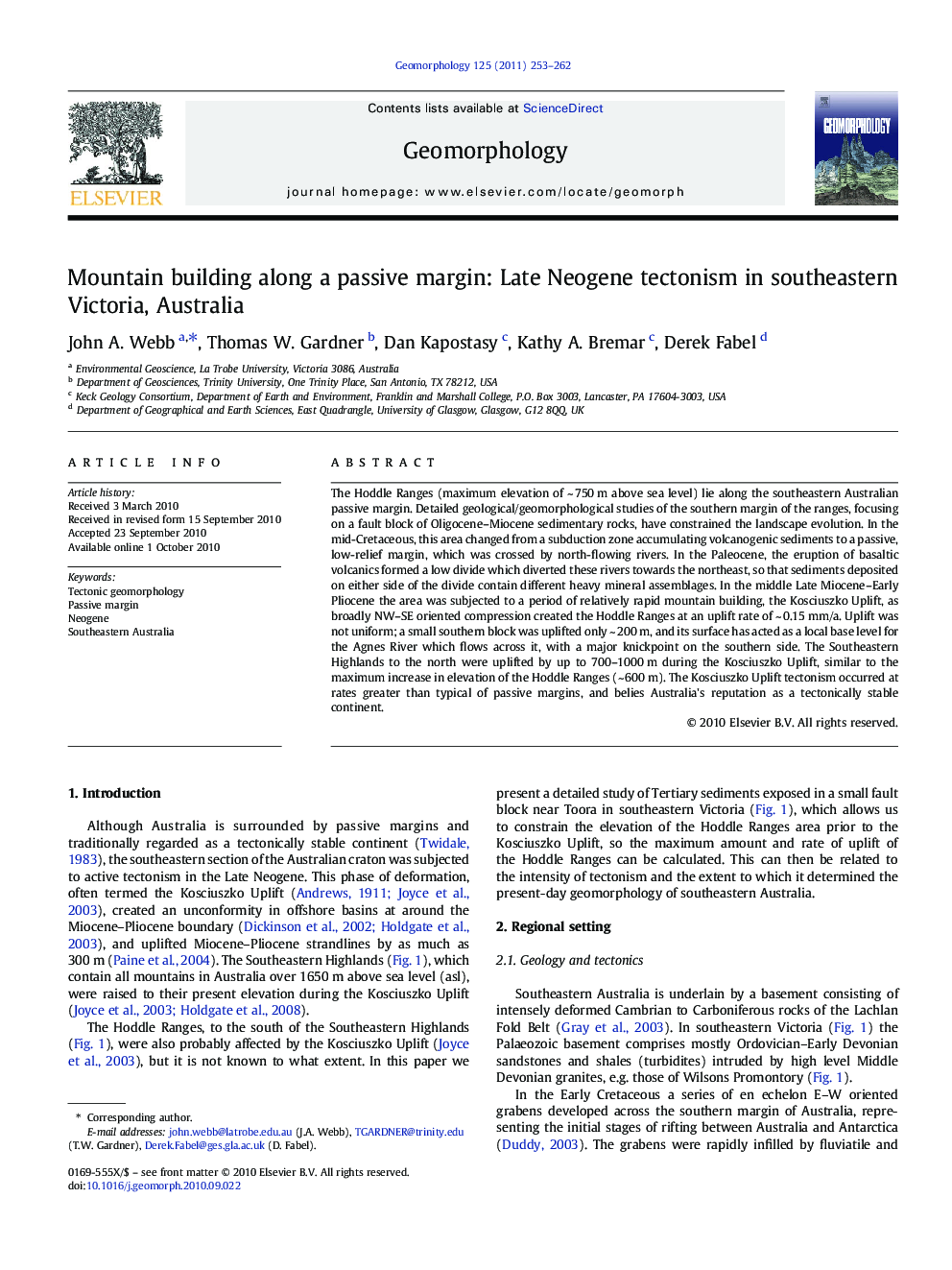| Article ID | Journal | Published Year | Pages | File Type |
|---|---|---|---|---|
| 4685791 | Geomorphology | 2011 | 10 Pages |
The Hoddle Ranges (maximum elevation of ~ 750 m above sea level) lie along the southeastern Australian passive margin. Detailed geological/geomorphological studies of the southern margin of the ranges, focusing on a fault block of Oligocene–Miocene sedimentary rocks, have constrained the landscape evolution. In the mid-Cretaceous, this area changed from a subduction zone accumulating volcanogenic sediments to a passive, low-relief margin, which was crossed by north-flowing rivers. In the Paleocene, the eruption of basaltic volcanics formed a low divide which diverted these rivers towards the northeast, so that sediments deposited on either side of the divide contain different heavy mineral assemblages. In the middle Late Miocene–Early Pliocene the area was subjected to a period of relatively rapid mountain building, the Kosciuszko Uplift, as broadly NW–SE oriented compression created the Hoddle Ranges at an uplift rate of ~ 0.15 mm/a. Uplift was not uniform; a small southern block was uplifted only ~ 200 m, and its surface has acted as a local base level for the Agnes River which flows across it, with a major knickpoint on the southern side. The Southeastern Highlands to the north were uplifted by up to 700–1000 m during the Kosciuszko Uplift, similar to the maximum increase in elevation of the Hoddle Ranges (~ 600 m). The Kosciuszko Uplift tectonism occurred at rates greater than typical of passive margins, and belies Australia's reputation as a tectonically stable continent.
